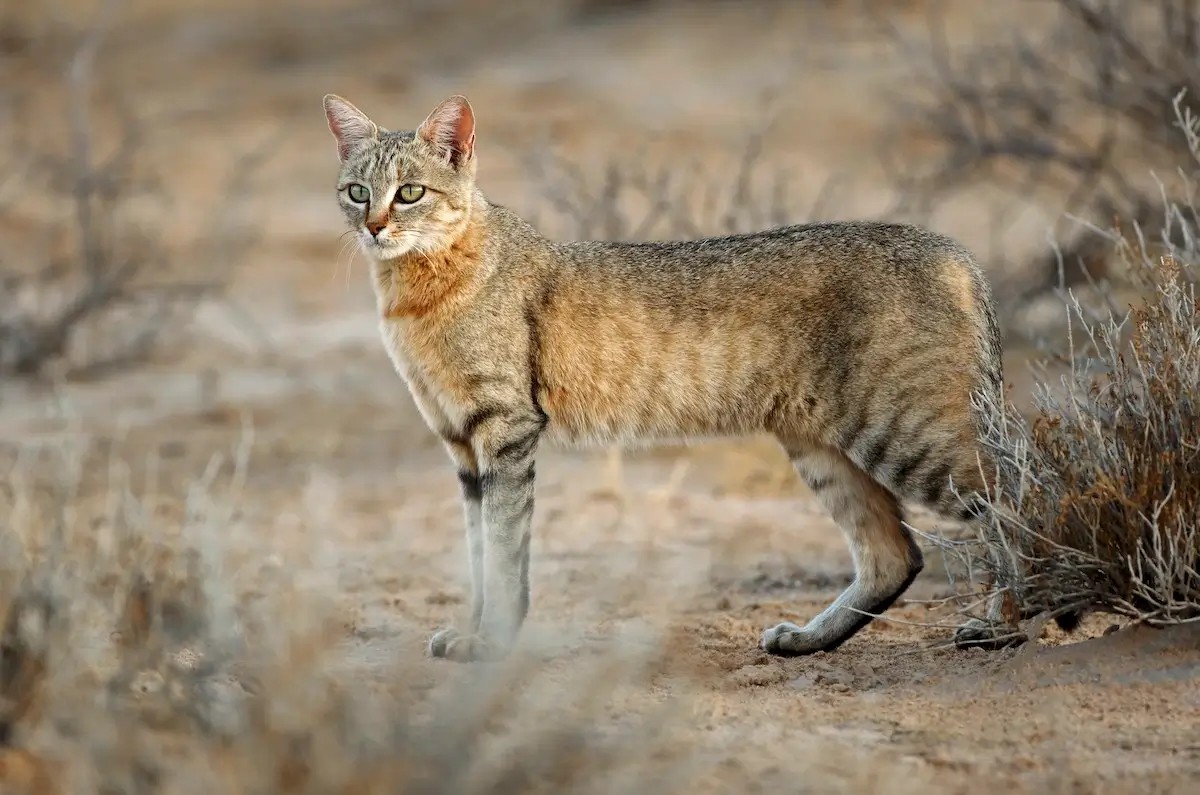It’s a common misconception that all cats naturally enjoy wet food. Many cat owners struggle to transition their feline friends from a dry kibble diet to a more hydrating and potentially healthier wet food option. As a veterinarian, I frequently recommend wet food for various health reasons, but I quickly learned that convincing cats to eat it can be a challenge.
If your vet has suggested a wet food diet for your cat, it’s often a crucial part of their treatment plan. Therefore, I became dedicated to helping dry food-only cats make the switch to canned food. Over the years, I’ve discovered several effective tips and tricks.
My own cats were initially “dry food addicts” when I adopted them. I wanted to add wet food to their diet for the hydration benefits and to ensure they received enough protein. It took a few months to consistently get them both on a wet food diet. One needed lots of praise and almost had to be spoon-fed at first, while the other became suspicious if I interfered too much. Now, I love seeing them eagerly waiting every morning as I prepare their wet food breakfast and hearing them both happily eating.
In this article, we will explore:
- Why some cats initially refuse wet food
- The advantages of a wet food diet and whether it matters if a cat only eats dry food
- When and how to switch your cat to a new diet
- 15 practical tips on how to get a cat to eat wet food
- Recommendations for reputable wet cat food brands and how to choose the best option
Why is My Cat Refusing Wet Food?
Cats accustomed to dry food’s crunchy texture may resist the change to softer wet food. They’re often called “dry food addicts.” To prevent this, it’s best to introduce various textures, like kibble, meaty chunks, and pate, from kittenhood.
If your cat refuses wet food, it’s always wise to consult your veterinarian for a check-up, including a dental examination. Dental issues, such as resorptive lesions (painful erosions on the tooth surface), can make eating wet food uncomfortable.
If your vet rules out any medical issues, read on for tips on how to get your cat to eat wet food.
What Are the Benefits of Feeding Your Cat Wet Food?
- Increased Hydration: Crucial for cats with chronic kidney disease, feline lower urinary tract disease (crystals, bladder stones, feline idiopathic cystitis), or constipation.
- High-Protein, Low-Carb Diet: Ideal for diabetic cats, as wet food makes it easier to achieve this balance.
- Weight Management: The higher water content in wet food means fewer calories per gram, promoting a feeling of fullness.
- Easier Medication Administration: Wet food makes it simpler to hide or mix in medications or supplements.
- Improved Overall Hydration: Even if your cat eats dry food, adding wet food ensures they stay well-hydrated, especially if they don’t drink water often.
- Preventative Health: Establishing flexible eating habits early can be beneficial as they age and potentially develop health conditions that would benefit from a wet food diet, like chronic kidney disease.
Dry food contains about 10% water, while wet food contains approximately 80%.
Is It Okay if My Cat Only Eats Dry Food?
If your cat has a health condition that requires a wet diet, it’s important to make the transition to ensure the best possible outcome.
Even for healthy cats, incorporating wet food into their diet is beneficial. Cats have a naturally low thirst drive, stemming from their desert origins where they primarily obtained water from their prey (mice and birds, which are 60-70% water). Consequently, they may not drink enough water when fed only dry food.
Wet food helps keep your cat hydrated, which is vital for their long-term health.
Dry food offers advantages like lower cost and the ability to be left out for grazing cats. It’s also easier to use with puzzle feeders like Trixie Activity Puzzles for Cats, which provide enrichment. LickiMats can be used with wet food as slow feeders, enriching the feeding experience.
Not all dry food is beneficial for teeth. Consider a diet specifically formulated for plaque and tartar control, such as Hill’s Science Diet Adult Oral Care, if feeding dry food.
If you choose to feed your cat only dry food or a mix of wet and dry, read How to Get a Cat to Drink More Water to ensure they stay hydrated.
When Should I Start Switching My Cat to Wet Food?
If your cat is healthy and happy, you can begin transitioning to wet food immediately.
However, avoid switching diets if your cat is currently sick. A sick cat already has a reduced appetite and needs adequate nutrition to recover. Introducing a new food they may not readily eat can worsen the situation. They might also develop an aversion to the new food, associating it with feeling unwell. Wait until they feel better before introducing wet food.
Diet changes can be stressful for some cats, especially those with lower urinary tract disease (like cystitis). Gradual changes are key, considering their emotional state.
Always consult your vet for advice on when to switch to a new diet if your cat is unwell.
Is It Okay to Suddenly Switch From Dry to Wet Cat Food?
Even if your cat seems interested in wet food, transition slowly to prevent digestive upset like diarrhea or vomiting. Gradually increase the amount of new food and decrease the amount of old food over a week.
How Do You Get a Picky Cat to Eat Wet Food? 15 Proven Tips
Never starve your cat to force them to eat wet food. Cats that don’t eat for over 48 hours, or eat significantly less over several days, can develop serious complications like hepatic lipidosis (fatty liver disease). Ensure your cat eats at least one meal every 12 hours.
Here are 15 tips on how to get a cat to eat wet food:
1. Patience is Key
Changing a fussy cat’s eating habits can take weeks or months. Don’t give up immediately if they don’t eat wet food right away, especially if they’ve only eaten dry food their entire life.
2. Gradually Combine Wet and Dry Food
Mix a small amount of wet food with their dry food. If they accept this, gradually increase the wet food and decrease the dry food each day. Store the remaining canned food in the fridge for 24-48 hours to prevent waste.
If your cat refuses a mixed bowl, place a teaspoon of wet food next to their dry food each day, allowing them to touch. If they start eating the wet food, gradually increase the amount.
You can also put wet food in the bowl first, then cover it with a layer of dry food. This encourages them to eat the dry food first and then continue to the wet food.
3. Implement Meal Feeding
If your cat grazes on dry food throughout the day, switch to offering two meals: one in the morning and one in the evening, with no food available in between. A hungrier cat may be more willing to try wet food at mealtime.
Offer wet food, and if it remains uneaten after 30-60 minutes, remove it and give them their dry food. Remove the dry food after another 30-60 minutes and don’t offer more food until their next scheduled meal.
Once your cat reliably eats wet food, switch to small, frequent meals throughout the day instead of two larger meals (meal feeding). Cats’ wild ancestors typically ate 7-20 small meals daily, consisting of mice, rodents, and reptiles. Mimicking this natural eating behavior is believed to promote health and happiness.
The Cat Mate Automatic Feeder can provide five meals throughout the day while you’re at work. It includes ice packs, making it suitable for wet food.
4. Use Ice Packs Under Their Bowl
Wet cat food should be discarded after 1-2 hours due to bacterial growth, depending on room temperature. Placing the bowl on flat ice packs keeps the food fresher longer, allowing you to leave it out for several hours. This benefits grazers who eat small amounts at a time.
5. Incorporate Irresistible Treats
Mix wet food with an irresistible treat, like canned tuna in spring water (never in brine or oil) or a Churu Lickable Puree Treat. If they won’t eat it mixed in, place the treat on top of the wet food and gradually press it in more each day.
Sprinkling freeze-dried chicken treats on top of wet food creates an “in-between texture” to help your cat adjust.
6. Offer a Variety of Food Options
Experiment with different flavors (chicken, seafood) and textures (pate, jelly, meat chunks, shredded meat). Break up pate or jelly textures with a fork if your cat prefers.
Avoid switching foods too frequently. Stick with a food that sparks even a little interest (a longer sniff or a lick).
Once your cat consistently eats one wet food, transitioning to other flavors and textures becomes easier.
If you’re feeding a prescription diet, check with your vet for other available flavors or textures from the same or a different brand.
7. Warm Up the Food
Serving food warm releases aromas, making it more appealing. Aim for a mouse’s body temperature (about 37°C or 98.6°F).
Heat it in a microwave for a few seconds on a low setting, mix well, and test the temperature before serving. Alternatively, add a small amount of warm water and mix.
8. Offer Chilled Food
Some cats prefer chilled food, so try offering it straight from the fridge.
9. Feed Your Cat in a Quiet Location
Offer wet food in a quiet place away from other pets. Some cats prefer to eat alone and may be more willing to try something new without disturbances.
10. Allow Them to Observe Other Cats
If you have another cat who enjoys wet food, let the cat you want to transition watch them eat. Curiosity can be a powerful motivator.
11. Encourage Your Cat
Some cats respond well to chin, cheek, or tail scratches, along with gentle, encouraging words. Others may become suspicious and prefer to be left alone with the food. Observe your cat’s reaction and adjust your approach.
12. Hand-Feed Your Cat
Offer small amounts of food on a spoon or your fingers, encouraging them to lick it off. This can help them realize it tastes good and start their wet food journey.
13. Engage in Playtime Before Feeding
Playing with fishing rod-type toys or wand toys before mealtime can stimulate their appetite and increase their willingness to eat the new food.
14. Use Wet Food as a Reward
If your cat performs tricks or behaviors for a treat, offer a small amount of wet food as a reward. They may automatically take it out of habit, and hopefully, enjoy the taste.
15. Add an Appealing Garnish
Enhance your cat’s dining experience by adding a garnish to their wet food. Check with your vet before adding anything new if your cat has a medical condition.
What Is the Best Canned Cat Food?
Every cat has different preferences, so trial and error is often necessary. Fish and chicken are usually good starting points. Medium-sized meaty chunks may be more appealing than pate or mousse.
When choosing a cat food, follow the World Small Animal Veterinary Association (WSAVA) Guidelines on Selecting Pet Foods.
Choose a food brand that:
- Employs at least one full-time qualified nutritionist
- Employs qualified and experienced pet food formulators
- Meets the Association of American Feed Control Officials (AAFCO) or European Pet Food Industry Federation (FEDIAF) nutrient profile guidelines
- Has adequate quality control measures to ensure food safety
- Performs product research and nutritional studies
- Labels the product as ‘complete’, meaning it will provide all the nutrients your cat needs
Purina, Royal Canin, and Hill’s are reputable companies that exceed WSAVA guidelines. They employ veterinary nutritional specialists with advanced degrees, perform feeding trials, and contribute to animal nutrition research.
If you prefer another brand, check their website to ensure they meet the WSAVA criteria. If the information is not readily available, contact them and request it.


